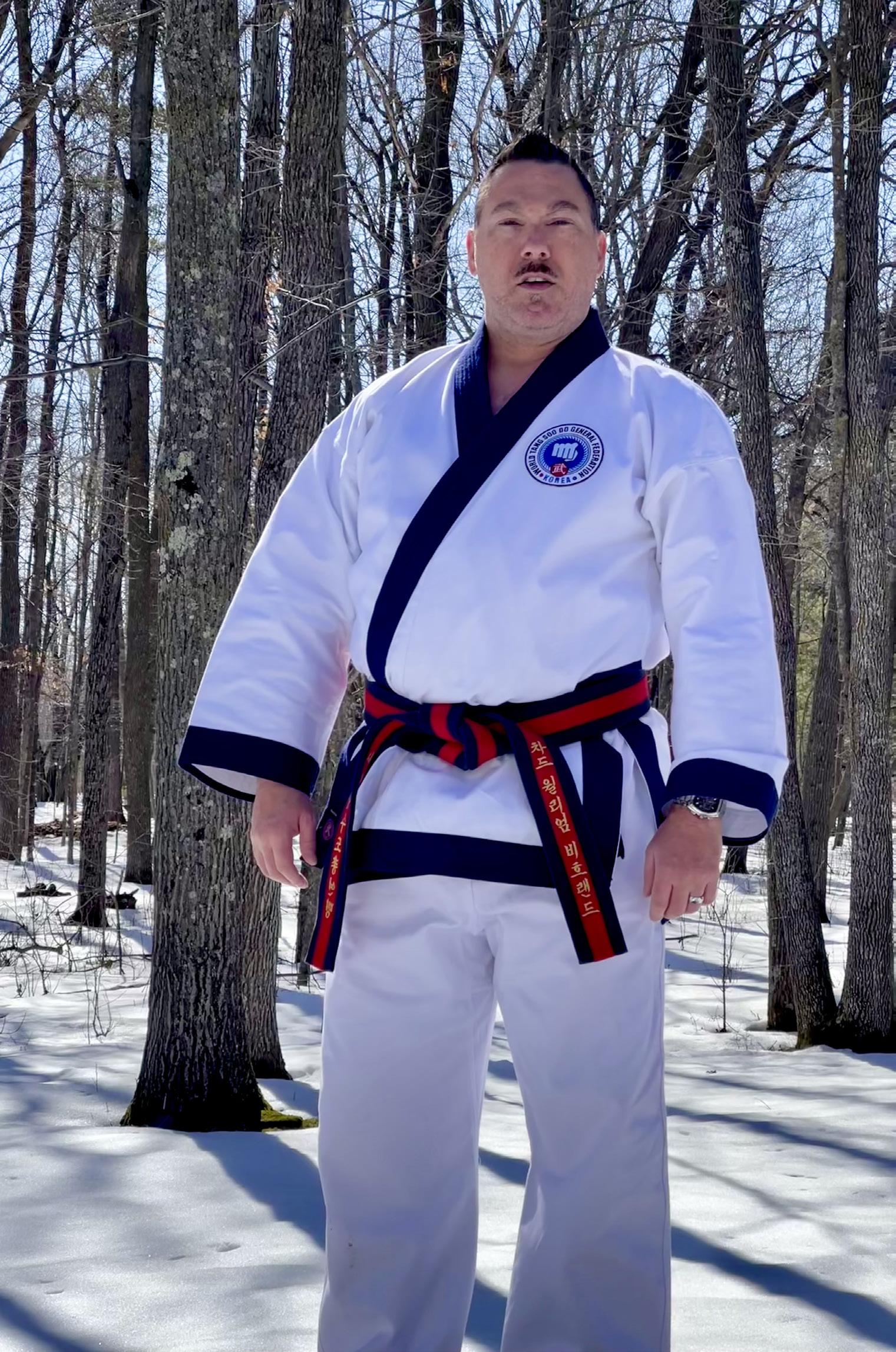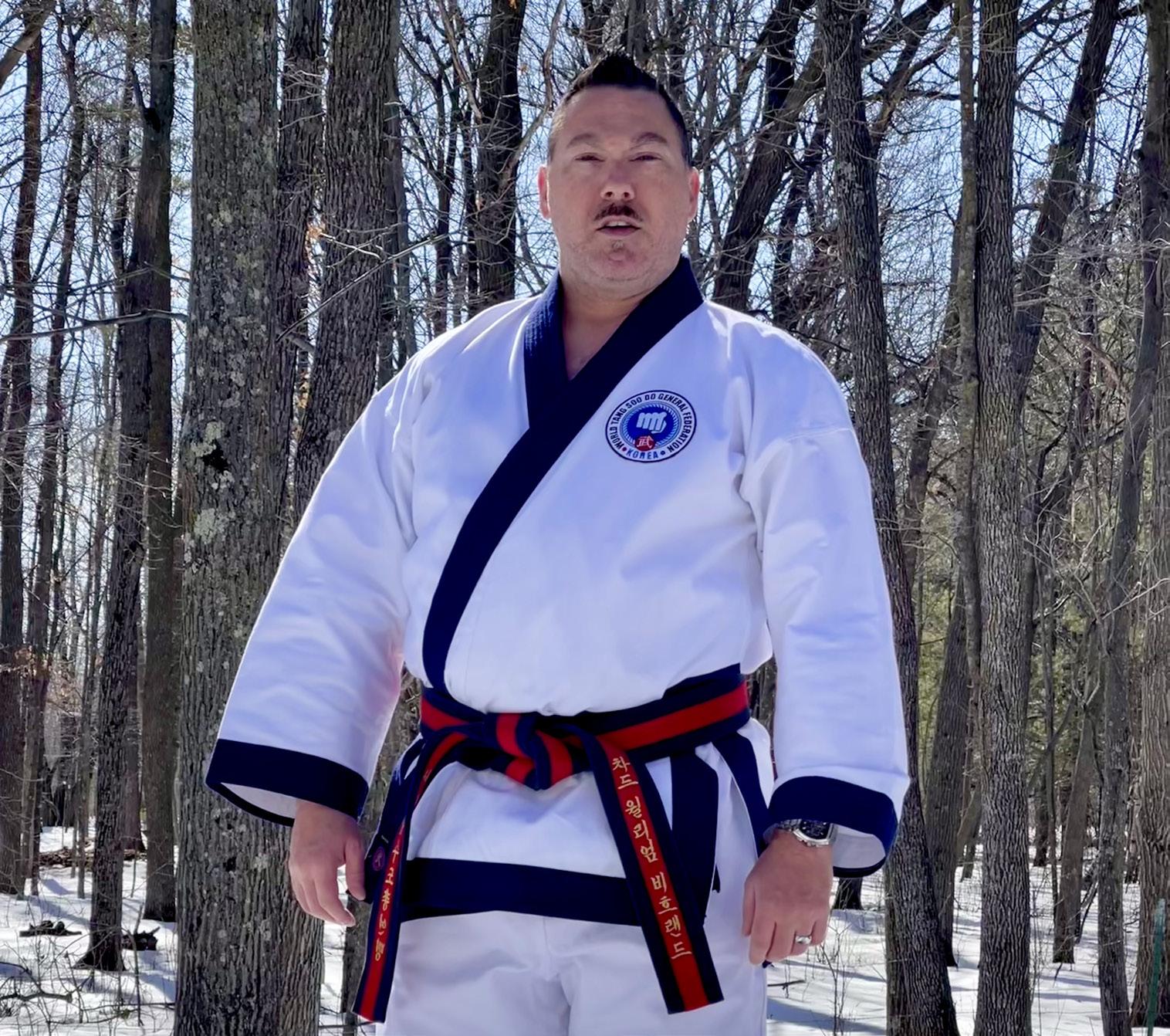
11 minute read
MASTER CHAD BEHREND (p2 SMASTER Guy E. Larke
MASTER CHAD BEHREND – PERSEVERANCE PAYS OFF
By Master Guy Edward Larke
Advertisement
Part Two
What was your first black belt test like?
Oh, well, in one of my articles. I talked about my first white belt test where GM Cho had me do the flying side kids through a full board. Now, that was my white belt testing. So that was really interesting. Then I got frustrated and upset because I couldn't break the board. He said to me, No try! Break board! Which was his mentality, you know? My Black Belt testing was 1988. I want to say there were probably 25 of us. It was on concrete floors, no mats, the floor carpeting smelled of sweaty feet. It was also winter time and I feel that the heat was turned to about 55 degrees. Needed to heat up by working out before testing. GM Pong Ki Kim was there during that test. He and GM Cho had us doing all these kicks, in combinations and jumping variations. So, we were all completely exhausted. We did, 30 minutes of combination kicking before we even started anything else. Then all the forms (26). That was followed by one step,two step,three step sparring, then self-defense. Right after, we had to do weapons routines, followed by free sparring, one person, two person, three against one. Last was board breaking. GM Cho was also very big on the Korean terminology. You could and would be asked Korean culture and History questions by surprise. You had better know the answers. So, part of testing you also to know the meaning of your highest forms and what it stood for. And one that I remember, in my mind was that Kwang Gae Toh Dae Wang (Dae Wang = great king) was the 19th king of the Koreo Dynasty. And then on and on and on, so he would have you recite this stuff. He's very strict on Korean terminology and history. He had us recite, the 10 tenants of Taekwondo and the 10 articles of faith for the Moo Duk Kwan, and other terminology depending on what rank you were. Sometimes he would ask you something he knew you didn’t know. Then he'd go, Now, you're gonna have to go home and study it and write an article on it and I'm gonna ask you about it at the next testing. You had to do it because if he asked you to produce it and you didn’t, it wasn't going to fly. I think a lot of modern instructors probably have gotten away from that. I think it's a very good thing to learn about Korean history. GM Cho also liked talking about his training in Korea. On his seventh-degree black belt test. He said, he had to report to this area that was in the middle of winter, and there was a tent set up outside. He thought he was going to be going through all of his forms and techniques and stuff like that. Instead for his testing, he had to sit there on the ground and meditate for hours without moving. That's what his test was. He said he got so cold, he got up and he had to run out of the tent because he was freezing, so they flunked him for seventh-degree black belt. So, he had to go back and do it again. It wasn't even anything physical. It was all mental discipline. And talk about mental training. One of my other black belt test scenes, I don't know I might have been third or fourth degree black belt. GM Pong Ki Kim was conducting black belt testing .GM Kim was at the desk giving a lecture and Master Cho was standing in front of him at attention wearing his fancy dress suit. There was a fly flying around the room and it was bothering
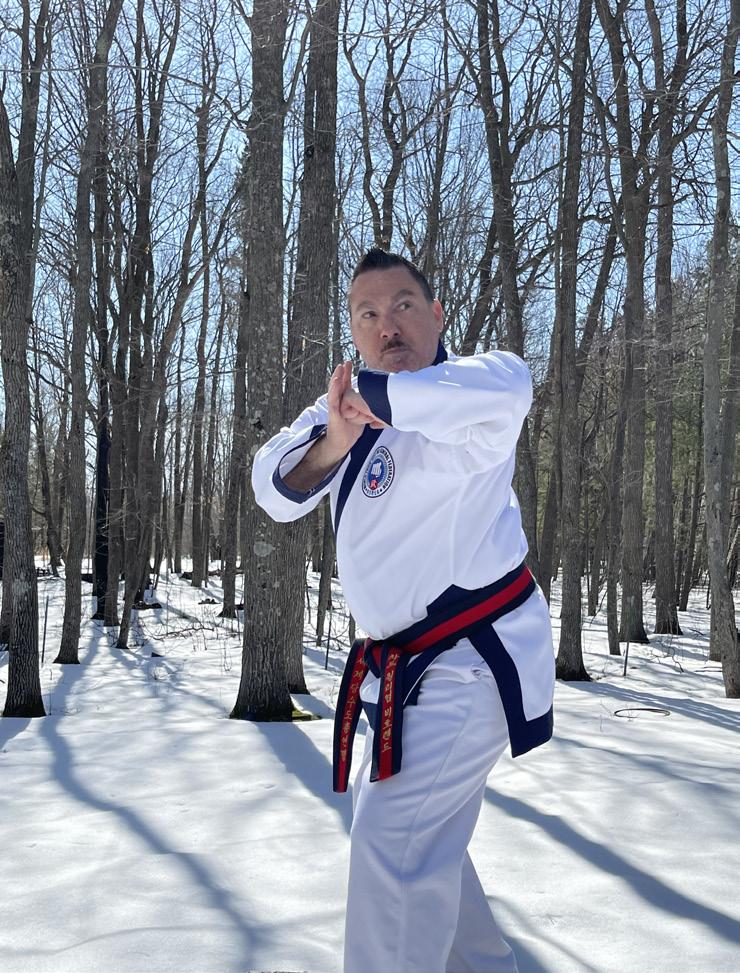
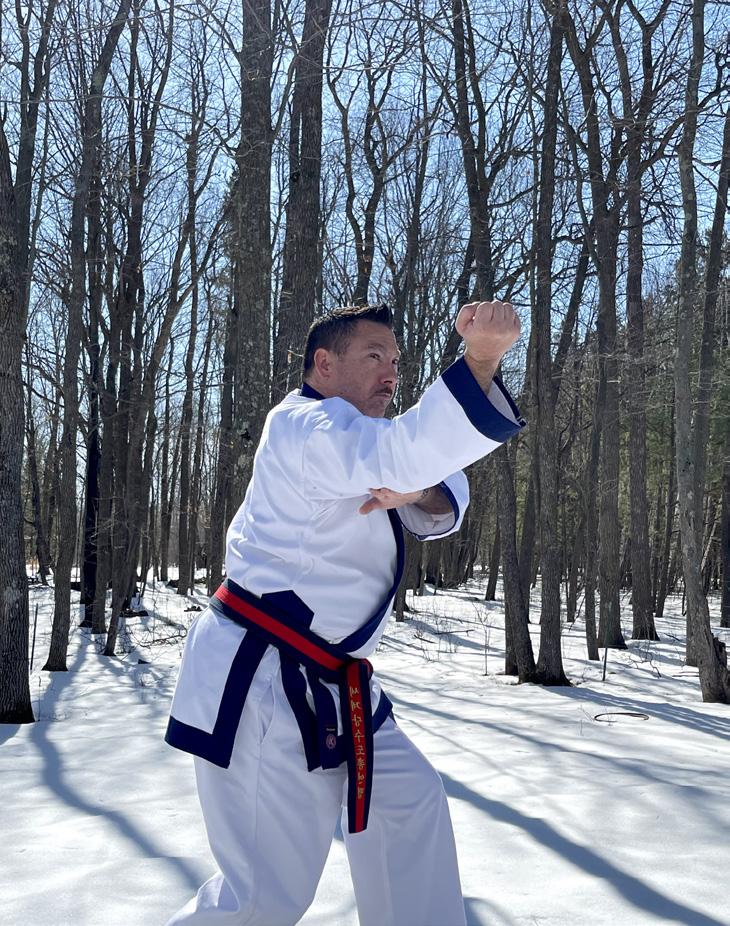
all of us by landing on us and we were all brushing it off and shooing it away. It was flying around Master Cho and landed on his face. He was standing in front of his master and never moved one muscle. He stood there for like a half an hour and listened to the lecture from GM Kim. He didn't blink, he didn't move a muscle with the fly all over his face- strict discipline.
Oh, that's amazing focus. So, out of the ITF, WTF and then Moo Duk Kwan, what are your favorite forms? What made you decide to leave your last instructor?
My Grand Master Byung Kon Cho had one of the largest school systems in the Midwest during the 80’s, 90’s. As the martial arts groups expanded in the Wisconsin area over time/ and frigid winters, it was decided that he would move out of that area being that it was becoming less profitable , and moved Virginia. I continued to run the school in Appleton, WI for many years, having the satisfaction of training high caliber martial artists through black belt and beyond. We talked frequently, and GM Cho would come back twice a year to teach and do seminars for the students.
As the years passed a decision had to be made whether to continue to operate the dojang or to work full time at the hospital in Radiology doing CT scanning. A way to support my lifestyle of International travel and a cabin. I continue to work full time doing Radiology CT scanning.
I really like the ITF forms. The WTF Poomsae, I never liked any of those. Not even the black belt ones. There's little to no application for WTF hyung. There were people who made stuff up. But at that time, there was no application.. Even up to fourth degree black belt, we did very little application of what the techniques were actually for. With Tang Soo Do hyungs there was always a lot of training in applications-I enjoyed that greatly. I really like the Tang Soo Do forms because there you can definitely see the Chinese influence and application of technique in them. I still practice all the hyung actuallyITF,WTF,Tang Soo Do. So, I do all of them yet. There's probably between What attracted you to the World Tang Soo Do General Federation?
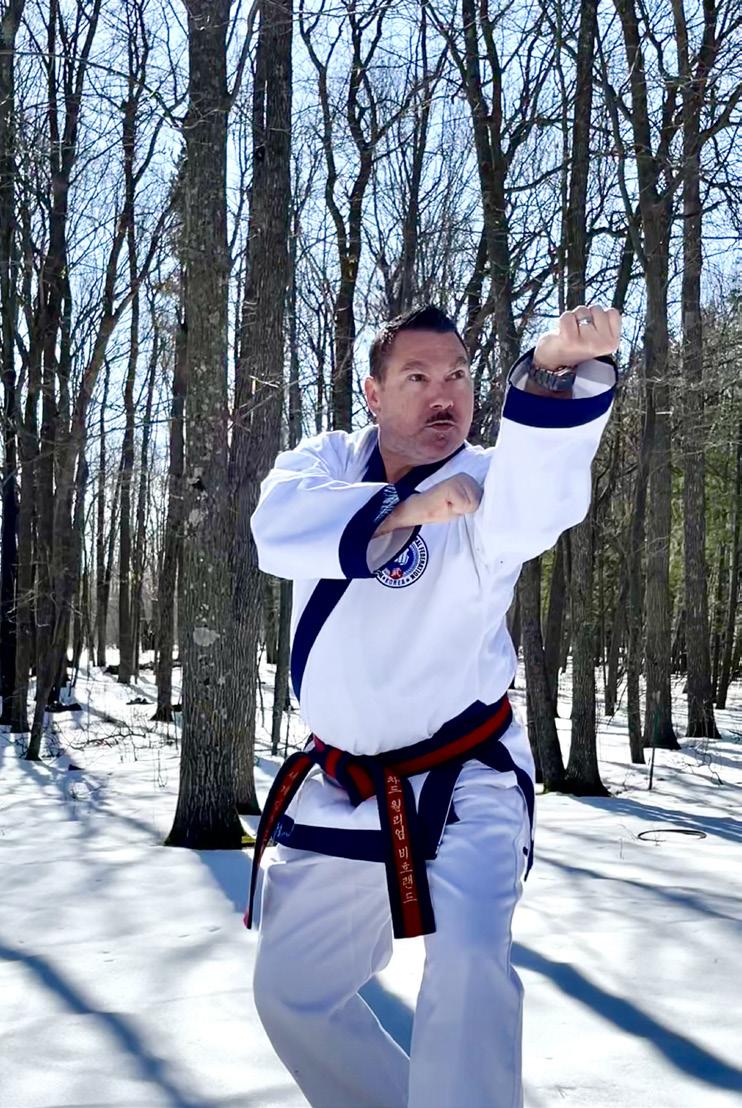
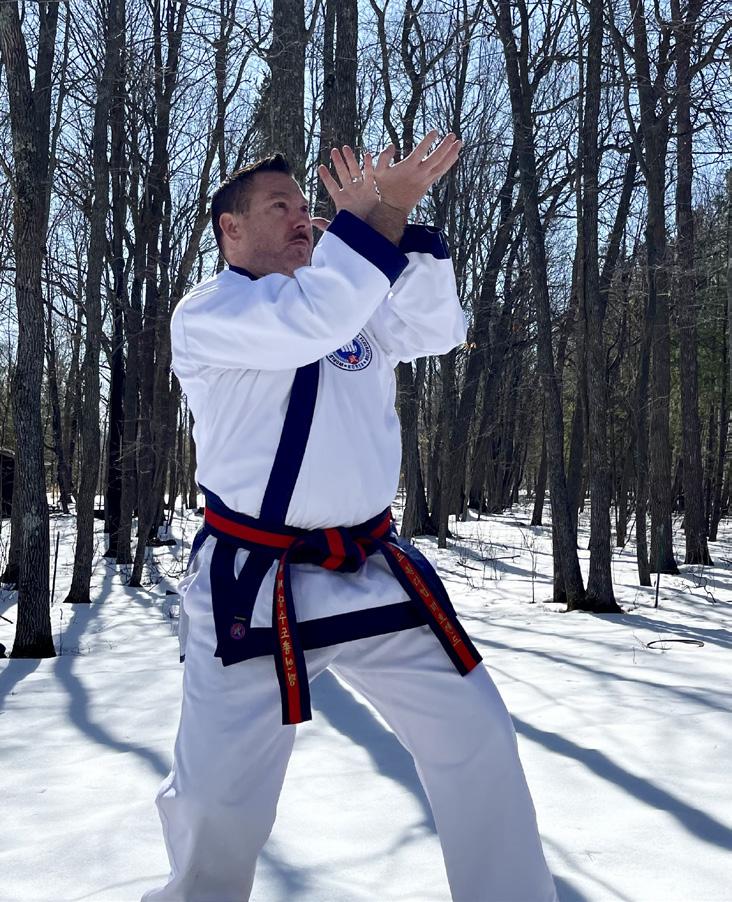
I started training in Tae Kwon Do 1984- during seminars and training with Grand Master Cho he would talk about his training in Korea, and talking about the Moo Duk Kwan, and his Master Pong Ki Kim. The history of Moo Duk Kwan, was covered in depth every year when all of the schools would combine for a yearly seminar. Gm Kim of course would be in attendance too. As I got much older and time passed, I wanted to dig deeper into the history of the MDK, Tang Soo Do, the founder, training methods, etc. That’s when I learned that the art was originally Tang Soo Do and not Tae Kwon Do. I thought how could this be? Tae Kwon Do was 2000 years old. I had a lot to learn! And so my digging deeper led me to World Moo Duk Kwan General Federation in Korea. The President at the time was GM Choi Hee Seok. The team at that time consisted of Kim Yong Duk, Choi Hee Seok, KoeWoong Choung, and Master Jae-Joong Kwon. The name has now changed to World Tang Soo Do General Federation, with GM Choung being the President of the federation in Korea. I wanted to get back to the roots of Moo Duk Kwan through the training
and teachings of Tang Soo Do. It has become an incredible experience working and learning from a large group of Korean Grand Masters. For more information on the federation in Korea please email info@ moodukwonkorea.org
What were your impressions when you visited?
I had contacted GM Choung in Korea, and we organized a time for me to visit Korea to discuss the future of Tang Soo Do, Moo Duk Kwan. It was an incredible experience. I had previously been to China exploring history and martial arts teachings, but now I was finally in Korea- about the meet the president, GM Choung. As I was getting out of the taxi at headquarters, GM Choung and GM Kim were there to welcome me to Korea. I bowed in a show of great respect for these men. We arrived inside headquarters and there was a very large group of senior Grand Masters there waiting for our meeting and training. There was a huge banner welcoming me to Korea and the federation. You were there with your beautiful wife Gina was there to translate. My time in Korea was amazing I will never forget that experience. I’ve met and trained, and looking forward to train much more with senior grand masters. What led you to make your own specialty uniforms?
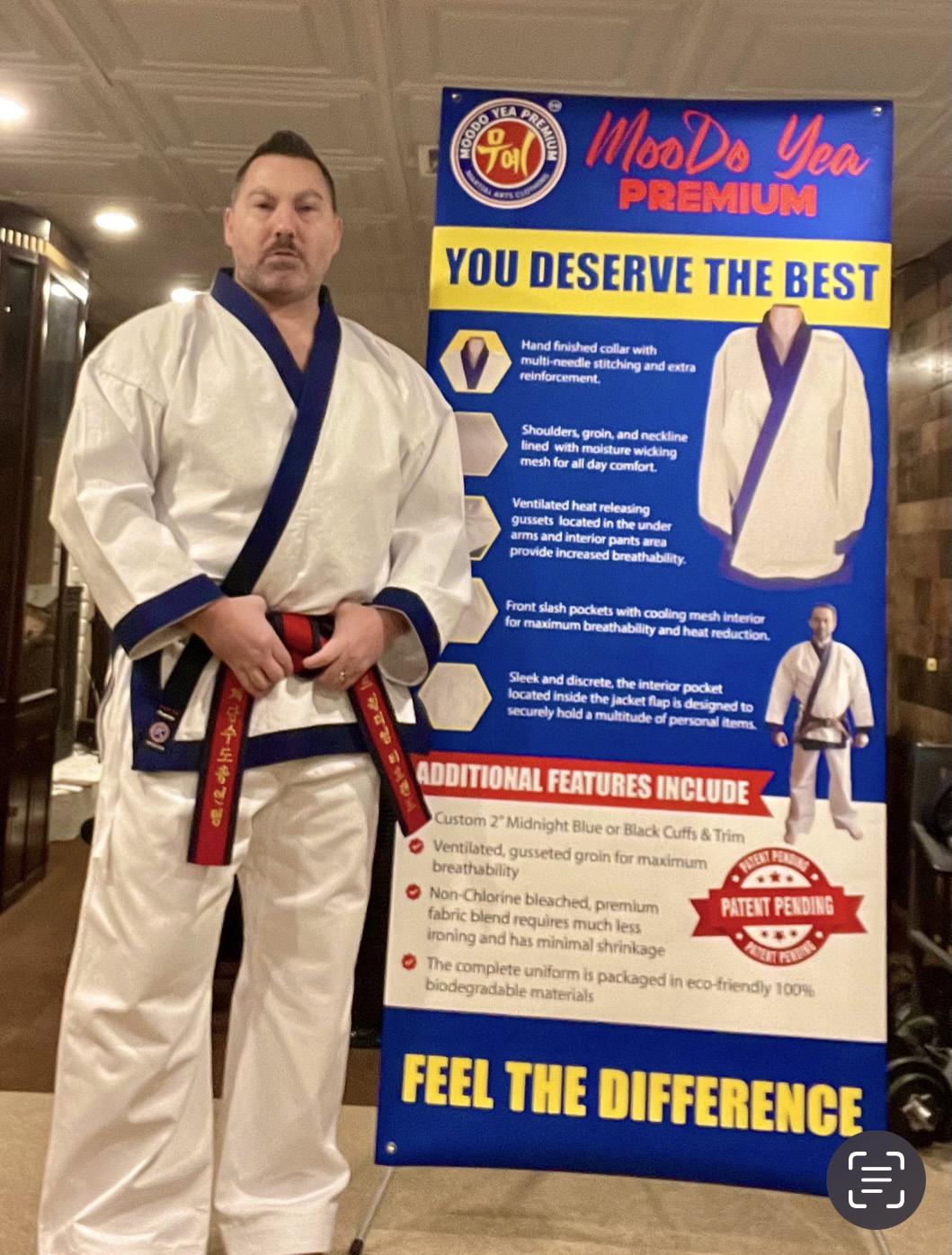
What attracted you to teaching? Did it change your paradigm of the arts?
Coming up through the ranks-I always wanted to teach. My instructor Mrs Zillmer would often hear me ask to warm up the class with stretching and basic techniques. Teaching was so gratifying to see students start from white and continue to black and beyond. I really do miss teaching full time, but as an adult I had to decide to focus on healthcare which people needed (being that they were in a sickly or deathly state) and CT scanning paid the bills and allowed me to travel the world much better than running my dojang. I still teach and do seminars several times a year, I’m but hoping to return to full-time teaching in the near future. My martial arts uniform business MooDo Yea Premium Uniforms is really starting to pick up. It’s nice to be able to provide a superior product at a reasonable price. Currently I have the Moo Duk Kwan stye uniforms in Black trim, Midnight Blue trim, and plain white for Karate practitioners. For more information moodoyeapremiumuniforms.com
Over the last 37 years, I’ve attended many different special events to include black belt testings, Ko Dan Ja, summer camps, all weekend training camps, tournaments that last for 12 hours or more, visiting temples in Seoul Korea etc. Poorly fitting, Sweaty sticky uniforms, no place to put anything without carrying a backpack. There needed to be a change. February 2021, I decided to start my own uniform company, which was a MUCH larger undertaking than I had originally thought. I Started off by creating a Limited Liability Company, and creating a business logo that would express my uniform brand accordingly. MooDo Yea LLC. Premium Uniforms was created. Next was the challenge to have my own blended fabric made to my specifications. Most other companies sell twill uniforms or 100% cotton gi. I could have easily taken the easy route and sold the same 100% cotton fabric, but I do not, and have never liked plain cotton. It’s too bulky, holds too much perspiration, sticks to the skin, lacks durability, and after every single wash- needs to be heavily ironed or its completely full of wrinkles and looks far from professional. So, I finally found a factory that would make the weight and blend of polyester/cotton fibers for canvas. Production sample after production sample had to be made and then once I received it- I tested it, washed it, made sure the trim didn’t’ fade, fray, etc. this process lasted months. Once the fabric met my satisfaction(and that’s not an easy task) I worked on the features of the uniform that I thought needed correcting. Additional room in the jacket to allow for more freedom of movement without your jacket pulling out of your belt. American cut sizing. Next, ventilation was added in the
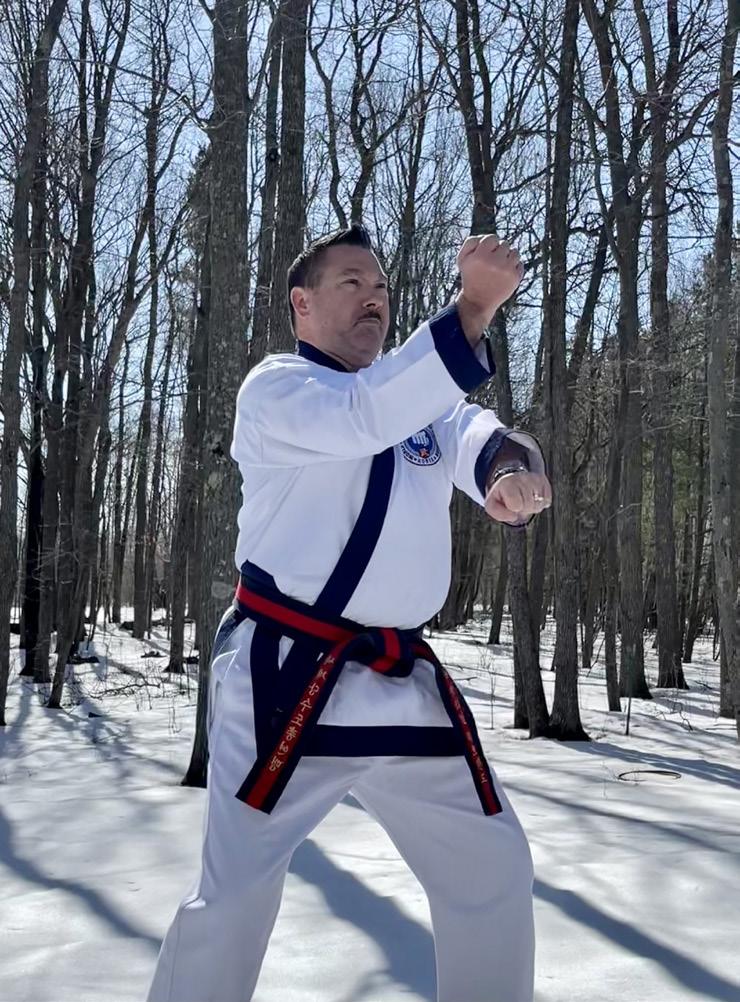
jacket, and two additional areas within the pants. Moisture wicking fabric was added throughout to help control temperatures during extreme workouts. This allows the heat and moisture to be wicked away from the body to help you keep cool. Pockets were then added to the top and the bottom of the dobok. Anyone that spends all day in a uniform during a 12 hour a day seminar, event , or tournament knows the importance of these features. Midnight Blue and Black collar trim which resists wear, fading, and fraying during many washings was another undertaking. The uniforms needed huge upgrades as the original uniforms were the same low-quality fabric and cut as was used in 1950. Changes had to be made and MooDo Yea LLC Premium uniforms was the one to make that happen. The next step was to file patents with Patent and Trademark offices. This again was no small undertaking. My attorneys, and graphic artists were needed to draw up the uniform design, and legal paperwork to protect my intellectual property. It is very expensive to do this, but a crucial step in the protection process for MooDo Yea Premium Uniforms.
Moo Do Yea doboks are being worn by many Black Belts, and Senior Grand Masters throughout the USA, UK, Korea, Netherlands, and Sweden. We plan to attend as many tradeshows and tournaments in 2022 as possible. If you would like us to attend-please email us below. For more information please contact Master Chad at Cwbehrend@ gmail.com (920)217-6846 or at moodoyeapremiumuniforms.com Senior Master Guy Edward Larke has spent most of his life enamored with the martial arts of Asia and Asian cultures in general. These led him to move to South Korea 20 years ago where he continued to study, research, and write about the various disciplines that shaped his life. In addition to teaching martial arts in Korea, USA, Malaysia and Denmark, he has written over 800 articles in over 20 magazines. He named the synthesis of his pilgrimage Kisa-Do Muye (the Knights Way Martial Arts). Larke can be found on Facebook or by e-mail at kisadomuye@gmail.com.
